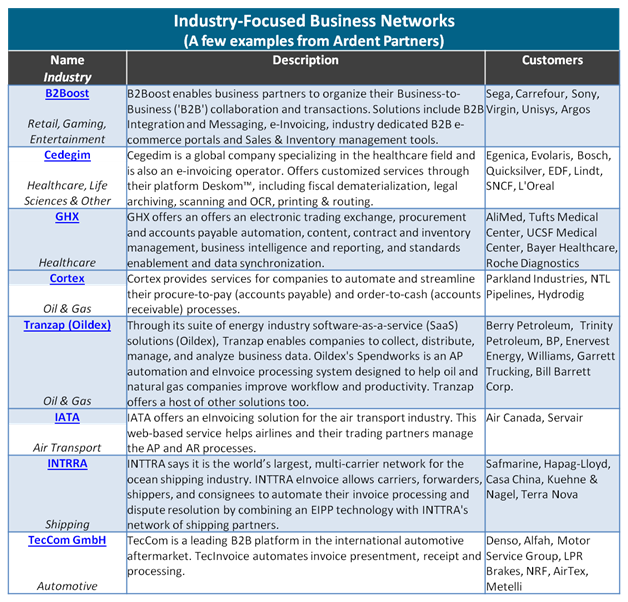Another great contribution from the author of CPO Rising, Andrew Bartolini
We started in Part 1 of this series with a look at the European business network landscape and some of the primary challenges and opportunities facing it. We also highlighted a few of the different European network providers as a way to provide a sample or taste of the overall market. By our estimate, there are more than 400 different networks operating in Europe alone. It is clear that the European market will continue to evolve and that forces in the market will drive consolidation, especially as EU promotes standardized regulations across the region. We expect that the European network market will shrink by one-third over the next five years. This shrinkage will be driven by consolidations and bankruptcies.
While regional focus has been one way that business networks attack the market, another traditional way to focus on the market is by industry or vertical.
An Industry Network is a business network where trading partners in one specific industry (i.e. oil & energy, aerospace, retail, etc.) converge to drive business activity. These networks are often founded by a consortium of large industry players and seek to develop a shared infrastructure and establish industry standards in trade.
Recent Ardent Partners research has shown that one of the most important criteria for buying organizations looking to choose a network is the number of current suppliers currently participating in it. Industry networks capitalize on this fact by working to get several large industry players as initial customers (or investors) – once a few large players have joined a network and had their primary suppliers enabled, you start to get good coverage for an entire industry’s supply base.
But beyond supplier participation, many of these industry networks also work to offer and, in many cases, develop industry standards around different business processes, data management, and transaction processing. By offering industry specific IP AND a high supplier match percentage, these industry networks can offer value to the large industry leaders as well as their Tier 1 and often, Tier 2 suppliers. Of course, these network providers must combat privacy concerns of the different industry players who are loath to share the proprietary IP that gives them an advantage. The networks must also show that a laser-focus on an industry can generate enough business so that they can be profitable over the long-term.
As with the European-focused networks, it is close to impossible to include every single Industry Network on our initial list. So while far from comprehensive, the list of Industry networks included below gives a good example of the wide variety of participants in this segment.
 Postscript: Here are the links to the above-referenced networks B2Boost, Cedegim, GHX, Cortex, Tranzap, IATA, INTRRA, and TecCom GmbH
Postscript: Here are the links to the above-referenced networks B2Boost, Cedegim, GHX, Cortex, Tranzap, IATA, INTRRA, and TecCom GmbH
Watch for Part 3 of this series that will cover Payment Networks








